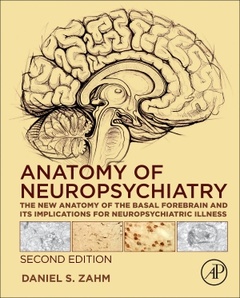Description
Anatomy of Neuropsychiatry (2nd Ed.)
The New Anatomy of the Basal Forebrain and Its Implications for Neuropsychiatric Illness
Author: Zahm Daniel S.
Language: English
Subjects for Anatomy of Neuropsychiatry:
Keywords
Emotion; movement; basal ganglia; accumbens; amygdala; septum; dopamine; psychiatry; behavior; limbic system; ventral tegmental area
468 p. · Hardback
Description
/li>Contents
/li>Biography
/li>Comment
/li>
1. The limbic systemdan eroding concept in perpetual search for a definition and some key experimental neuroanatomical discoveries that have undermined it 2. The anatomy of the basal forebrain 3. The greater limbic lobe 4. Focus on basal forebrain macrosystems 5. Interfaces of macrosystems with the brainstem reticular formation, thalamus, and each other 6. Macrosystems in motion, representation, value, emotion, and neuropsychiatric illness 7. Cerebellum as a macrosystem 8. Basal forebrain macrosystems as a fundamental organizing principle of vertebrate brain
- Presents discredited concept of the limbic system
- Reviews the neuroanatomy of the basal forebrain, greater limbic lobe, and reticular core
- Includes Clinical and Basic Science Boxes highlighting specific concepts, structures, and neuronal circuits from functional and clinical perspectives
- Features 10 videos of dissections of human brain done by the late Lennart Heimer




